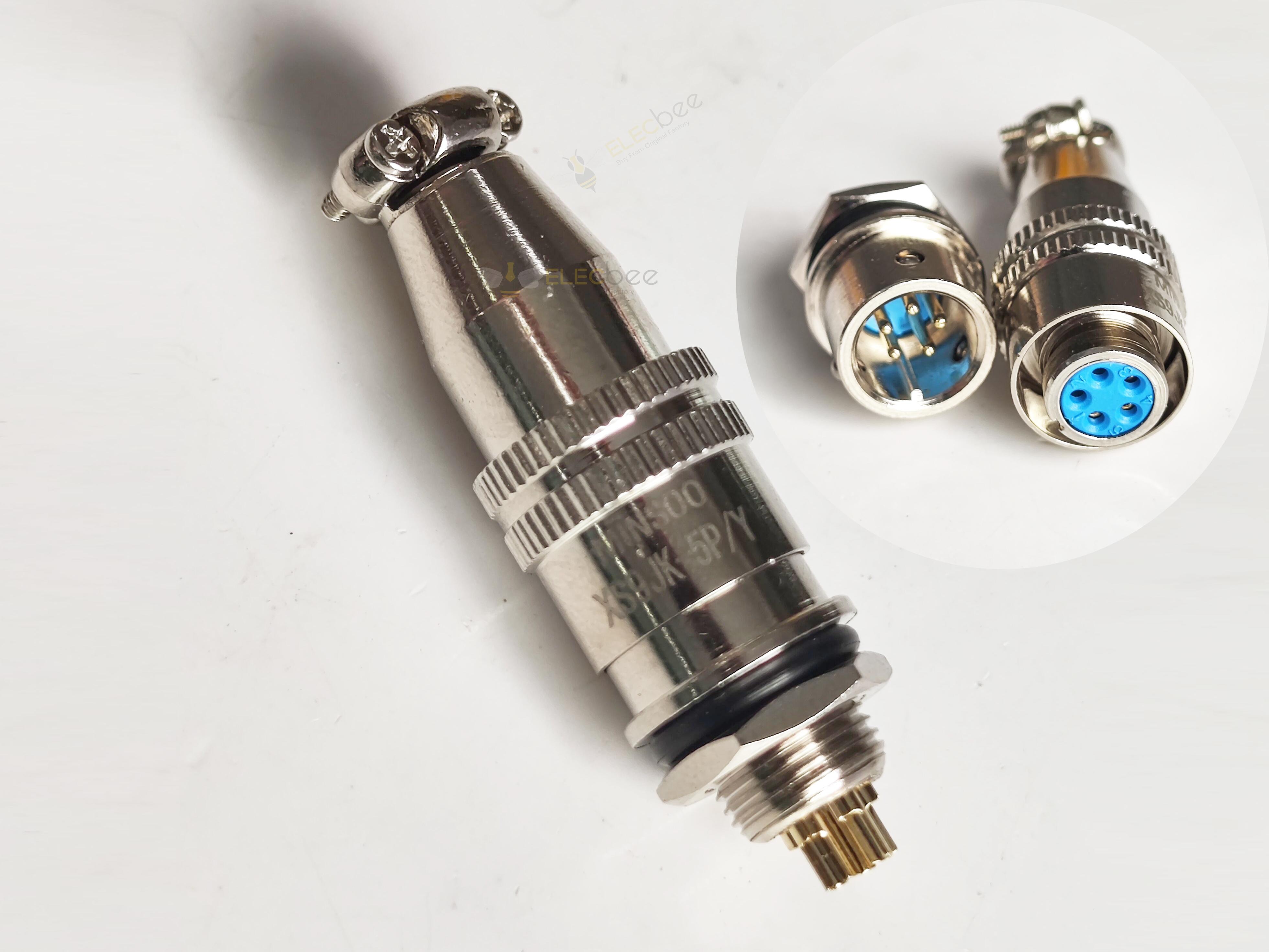Ein Rundsteckverbinder besteht aus zwei Teilen – einem zylindrischen mehrpoligen Stecker und einer Buchse, die, wenn sie miteinander verbunden sind, verwendet werden, um elektrische Geräte mit Strom zu versorgen oder elektrische Signale zu übertragen. Ihr kreisförmiges Design widersteht rauen Umgebungen und liefert zuverlässig Daten und Strom. Von der Internationalen Raumstation, die die Erde mit einer Geschwindigkeit von 7,66 km/s umkreist, über Astronauten, die den Kontinent unter der Kuppel überblicken, über hochfliegende Kampfjets und Verkehrsflugzeuge bis hin zu atomgetriebenen U-Booten, die in den eisigen Tiefen des Arktischen Ozeans lauern und der Meeresboden überspannt den Ozean. Unterwasser-Internetkabel und Rundsteckverbinder können große Maschinen, die in rauen Umgebungen arbeiten, mit kritischen elektrischen Signalen und Strom versorgen, daher müssen diese Geräte sicher und zuverlässig sein.
Die Herstellung einer sicheren und zuverlässigen Verbindung zwischen zwei Gegensteckern ist unerlässlich, um potenziell gefährliche Situationen zu vermeiden, die Geräte und vor allem Leben gefährden können. Hier kommt der Kupplungsmechanismus ins Spiel. Jede Kopplungsmethode hat unterschiedliche Hauptmerkmale und Vorteile, aber alle gewährleisten eine sichere Verbindung in jeder Anwendung. Da es so viele Möglichkeiten gibt, Rundsteckverbinder zu koppeln, ist die Wahl des richtigen Kupplungsmechanismus für Ihre Anwendung von entscheidender Bedeutung.
Gewinde, Bajonett und Push-Pull sind die drei grundlegenden Kupplungsarten, die üblicherweise für Rundsteckverbinder verwendet werden. Bei der Auswahl des zu verwendenden Kupplungstyps müssen verschiedene Faktoren berücksichtigt werden, darunter technische Anforderungen, Umgebungsbedingungen (z. B. Vibrationen, Stöße, Feuchtigkeit, Staub), Ergonomie und die Anzahl der erforderlichen Passungen. Benutzererfahrung und Kosten für Installation und Wartung müssen ebenfalls berücksichtigt werden.
TGewindeanschluss
Gewindesteckverbinder sind ideal für Anwendungen, die eine hohe Leistung erfordern und kein häufiges Stecken erfordern. Diese Rundsteckverbinder erreichen eine beträchtliche Steckkraft und verringern die Wahrscheinlichkeit einer versehentlichen Trennung. Der Gewindeverbinder erfordert nur vier Umdrehungen des Kupplungsrings, um vollständig zusammenzupassen. Für zusätzliche Sicherheit und Zuverlässigkeit sind entlang der Außenseite des Kupplungsrings Sicherungsdrahtlöcher vorgesehen. Gewindeanschlüsse sorgen für eine sichere Verbindung auch bei Anwendungen mit hohen Vibrationen. Rundsteckverbinder mit Gewinde sind häufig in Kommunikationsgeräten, schweren Maschinen, Militärflugzeugen und Raketen zu finden.

BAyonet-Anschluss
Bajonettsteckverbinder sind sehr einfach zu installieren, zu stecken und zu trennen durch ihre einfache „Drücken-und-Drehen“-Steckwirkung, was sie ideal für Anwendungen macht, die häufiges Stecken und Trennen erfordern. Das Kuppeln/Entkuppeln erfolgt durch ⅓ Drehung des Kupplungsrings, und die Passung wird durch die Verwendung von Bajonettstiften und Schrägen anstelle von Gewinden erreicht.
Bajonettverbinder bieten eine Kombination aus visueller, hörbarer und fühlbarer Bestätigung, dass die Steckverbinder richtig ausgerichtet und sicher verbunden sind. Es gibt auch Inspektionslöcher am Kupplungsring für einen weiteren visuellen Nachweis, dass sich der Bajonettstift in der verriegelten Position befindet.
Bajonett-Rundsteckverbinder eignen sich ideal für Blindsteckanwendungen und sind häufig in rauen Industrieumgebungen zu finden, die häufig Erschütterungen und Vibrationen ausgesetzt sind. Als Industriesteckverbinder kommen sie häufig bei Generatoren, Sensoren und Motoren zum Einsatz.
Push-Pull-Anschluss
Push-Pull-Rundsteckverbinder sind so konzipiert, dass sie ein versehentliches Trennen durch einen selbstverriegelnden Mechanismus verhindern, bei dem der Stecker in eine passende Buchse geschoben wird. Die erzielte Verbindung kann nicht einfach durch Auseinanderziehen des Verbinders gelöst werden, sondern der Verbinderkörper muss zusammengedrückt werden, während er nach außen gezogen wird, um die Verbindung erfolgreich zu trennen. Im Gegensatz zu herkömmlichen Steckverbindern, die zum Stecken und Herausziehen eine Drehkraft benötigen, sind Push-Pull-Steckverbinder auf Axialkraft angewiesen.
Push-Pull-Steckverbinder bieten erhebliche Platzeinsparungen, da der Techniker für den Verbindungs-/Trennvorgang nur zwei Finger verwenden muss. Dies wiederum ermöglicht es, mehrere Steckverbinder nahe beieinander zu montieren.
Rundsteckverbinder mit Push-Pull-Kupplung sind ideal für Anwendungen, bei denen es auf Zuverlässigkeit und schnelles Verbinden/Trennen ankommt. Zu diesen Anwendungen gehören Medizin, Instrumente, Wearables für Soldaten, Kommunikations- und Militärfahrzeuge.

Auswahl der richtigen Kupplung für Ihr Designkannherausfordernd sein, aber mit Hilfe der Elecbee-Experten können wir Ihnen mehrere Kupplungen zur Verfügung stellen, um den Auswahlprozess einfacher und einfacher zu gestalten. Egal, ob Sie medizinische Steckverbinder für innovative Beatmungsdesigns, robuste Steckverbinder für Generatoren oder Industriesteckverbinder für Palettierroboter benötigen, unser Team von Steckverbinderexperten kann Ihnen helfen, Ihre Designentscheidungen zu treffen und die beste Lösung für Ihre Anwendung zu finden. Wenn Sie Bedarf haben, senden Sie bitte eine E-Mailservice@elecbee.comoder rufen Sie +86 18271418329 an, Elecbee freut sich auf die Zusammenarbeit mit Ihnen.






